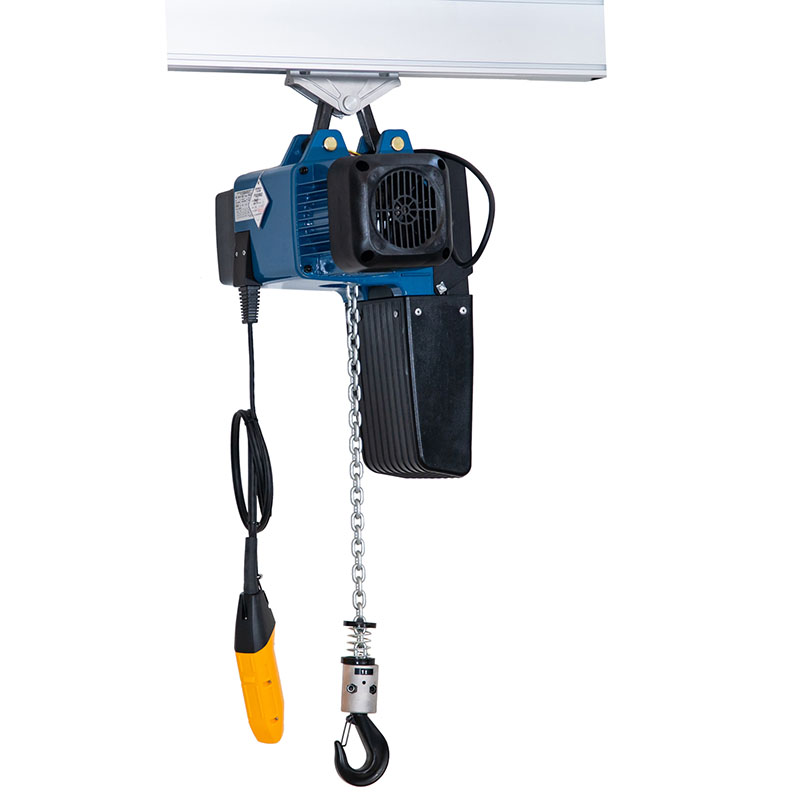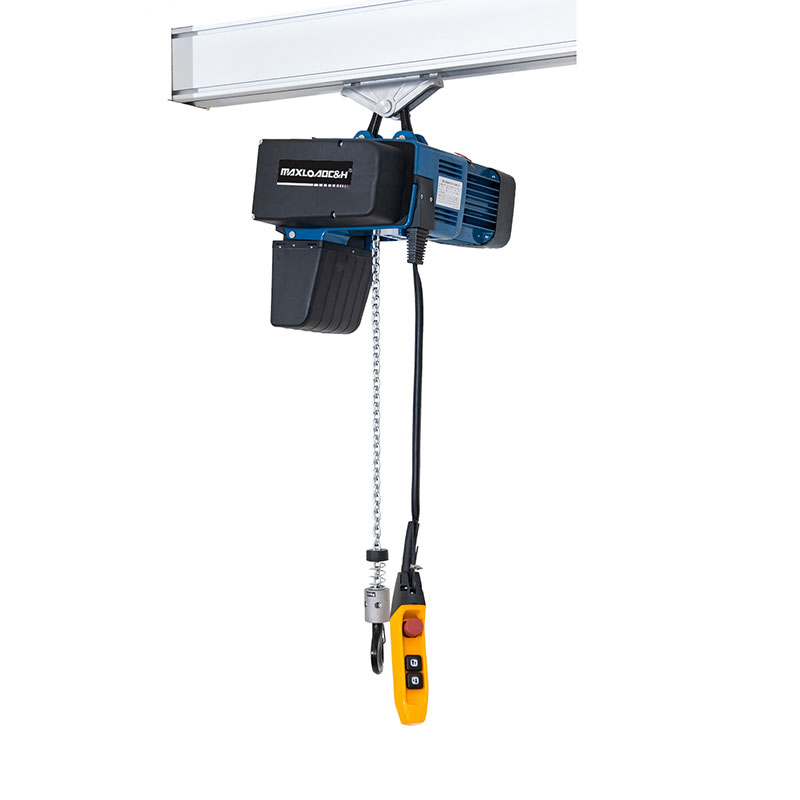Electric Hoists: The Core Power Unit of Modern Industrial Material Handling
In modern industrial systems, the efficiency and safety of material handling have a direct impact on the smoothness and cost control of the entire production process. As a key member of the lifting machinery family, electric hoists, with their efficiency, flexibility, and safety, have become indispensable vertical transportation equipment in factory workshops, logistics warehouses, construction sites, and other settings. This article will systematically analyze the inherent value of this universal industrial equipment from the perspectives of its operating principle, structural features, application scenarios, advantages, and future development trends.
I. Operating Principle and Structure
The core operating principle of an electric hoist is based on the precise coordination of motor drive and mechanical transmission. Its main structure typically consists of five major components: a drive motor, a reduction gear, a drum mechanism, a control system, and safety protection devices. When the operator issues a command via a joystick or wireless remote control, the drive motor starts and drives the reduction gear. The reduction gear meshes, converting the high-speed, low-torque motor output into low-speed, high-torque rotational power, ultimately driving the drum to retract and release the wire rope. This design ensures sufficient lifting torque while achieving precise speed control through multi-stage reduction. In terms of safety, modern electric hoists are generally equipped with multiple protection mechanisms. Overload protection automatically cuts off power when the rated load is exceeded; upper and lower limit switches prevent the hook from hitting the top or bottom; and emergency stop buttons immediately interrupt operation in the event of an emergency. Some high-end models also integrate intelligent monitoring systems, providing real-time feedback on the operating status of equipment and warning of potential failures.

II. Classification System and Performance Parameters
Electric hoists can be divided into various types based on their usage scenarios and technical characteristics. Based on the drive mode, they can be divided into single-speed and dual-speed models. The former is suitable for fixed operations, while the latter uses frequency conversion technology to achieve smooth adjustment of the lifting speed. Based on the installation method, they can be divided into fixed, trolley-type, and single-beam/double-beam suspended types to meet the installation requirements of different spatial structures. Based on the explosion-proof level, they can be divided into standard and explosion-proof types. The latter is designed for flammable and explosive environments and utilizes a special sealing structure and explosion-proof motor.
Key performance parameters include rated lifting capacity, lifting height, lifting speed, and operating speed. Rated lifting capacities typically range from 0.5 tons to 50 tons, with lifting heights exceeding 30 meters. Lifting speeds vary depending on the model, from 8 meters per minute (single-speed) to 3.2/8 meters per minute (dual-speed). These precise parameters ensure optimal performance under specific working conditions.
III. Deep Penetration of Application Scenarios
In the manufacturing sector, electric hoists are widely used for lifting materials on automotive assembly lines and in machining workshops. For example, precise control of the hook position and speed during engine assembly ensures smooth positioning and precise docking of engine assemblies. In the steel and metallurgical industry, lifting ladles in high-temperature environments place stringent demands on the equipment's high-temperature resistance. Specialized high-temperature electric hoists utilize thermal insulation materials and cooling systems to ensure continuous and stable operation in environments as high as 600°C.
On construction sites, electric hoists are often used in conjunction with construction elevators to accomplish high-altitude operations such as scaffolding erection and hoisting precast concrete components. In logistics and warehousing scenarios, electric hoists used with single-girder cranes enable rapid sorting and stacking of goods, significantly improving storage space utilization and operational efficiency.
IV. Core Advantages and Value Creation
Compared to traditional manual hoists, electric hoists offer three key advantages: First, improved efficiency: the electric drive reduces single-operation time by over 50%; second, enhanced safety: multiple safety devices significantly reduce the risk of accidents; and third, ease of operation: wireless remote control technology allows operators to control the hoist from a safe distance.
From a lifecycle cost perspective, electric hoists offer low maintenance costs. Routine maintenance tasks such as regular lubrication, wire rope inspection, and electrical system testing, combined with the modular design's rapid replacement of wearing parts, significantly reduce equipment maintenance time and costs. Furthermore, by utilizing high-efficiency motors and energy recovery systems, some new models can achieve energy consumption reductions of 15%-20%, aligning with the trend toward green manufacturing.

V. Technological Innovation and Future Trends
Currently, technological innovation in electric hoists is progressing in three key directions: intelligence, modularization, and energy efficiency. In terms of intelligence, smart electric hoists integrated with IoT sensors enable real-time upload and analysis of operating data, proactively identifying potential faults through predictive maintenance algorithms. In terms of modular design, the use of standard interfaces enables the rapid combination of different functional modules to meet customized needs. In terms of energy-saving technology, the combination of permanent magnet synchronous motors and variable frequency control technology continuously improves the equipment's energy efficiency.
Looking ahead, electric hoists will seamlessly integrate with MES systems and AGV dispatch systems to achieve automated and intelligent coordination of material handling. Remote monitoring and fault diagnosis capabilities will see a significant leap forward. Regarding new energy applications, some pilot projects have begun exploring the use of solar-assisted power systems in outdoor operations.
As the "nerve endings" of the industrial production chain, technological advances in electric hoists directly drive efficiency improvements across the entire manufacturing system. From initial mechanical drive to today's intelligent control, and from single-function to multi-scenario adaptability, this equipment's evolution epitomizes the advancement of industrial technology. With the continuous infusion of new materials, processes, and technologies, electric hoists will play an even more crucial role in the future industrial system, becoming a key force in driving the transformation to smart manufacturing.



 0086 17717607077
0086 17717607077
 0086 (021) 5999 9072
0086 (021) 5999 9072
 market@chnhoist.com
market@chnhoist.com







